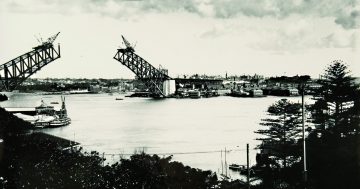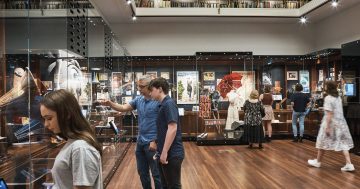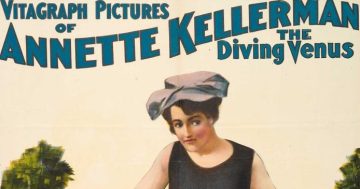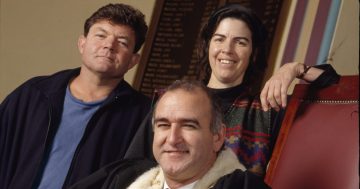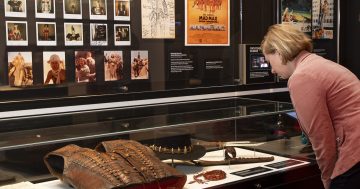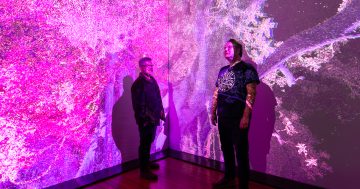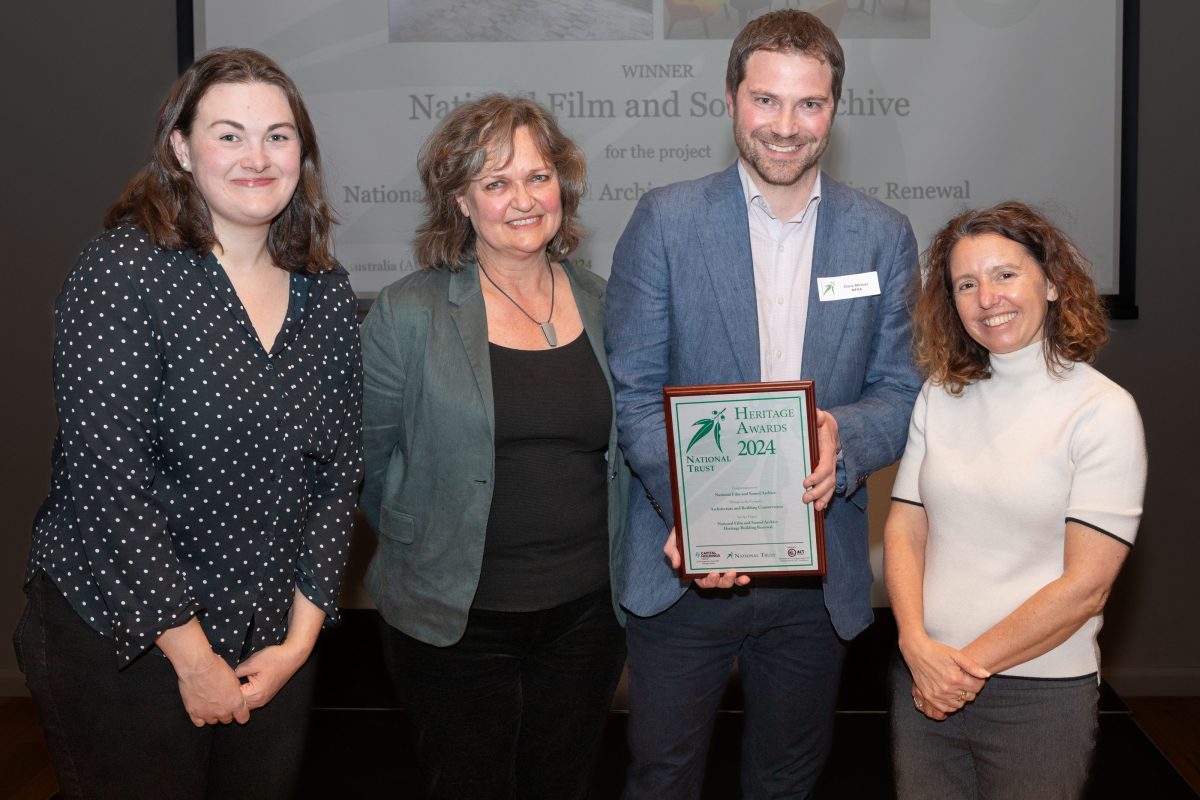
Lesley Thompson, Femke Rensen and Chris Mercer from the National Film and Sound Archive receive the award from ACT Heritage Minister Rebecca Vassarotti. Photo: NFSA.
When you’re the CEO of a world-leading cultural institution that collects a nation’s sights and sounds, it makes sense to listen to your stakeholders, your staff and (just as importantly) the people who come through your historic front door.
That’s why one of Patrick McIntyre’s favourite things when he’s at the entrance to the Art Deco building that is the National Film and Sound Archive Australia (NFSA) is to listen to what visitors say – and watch where they head to first.
These days, it’s usually through the NFSA’s newly restored Foyer into the Library and Mediatheque – three spaces that the National Trust of Australia has just recognised with an ACT Heritage Award.
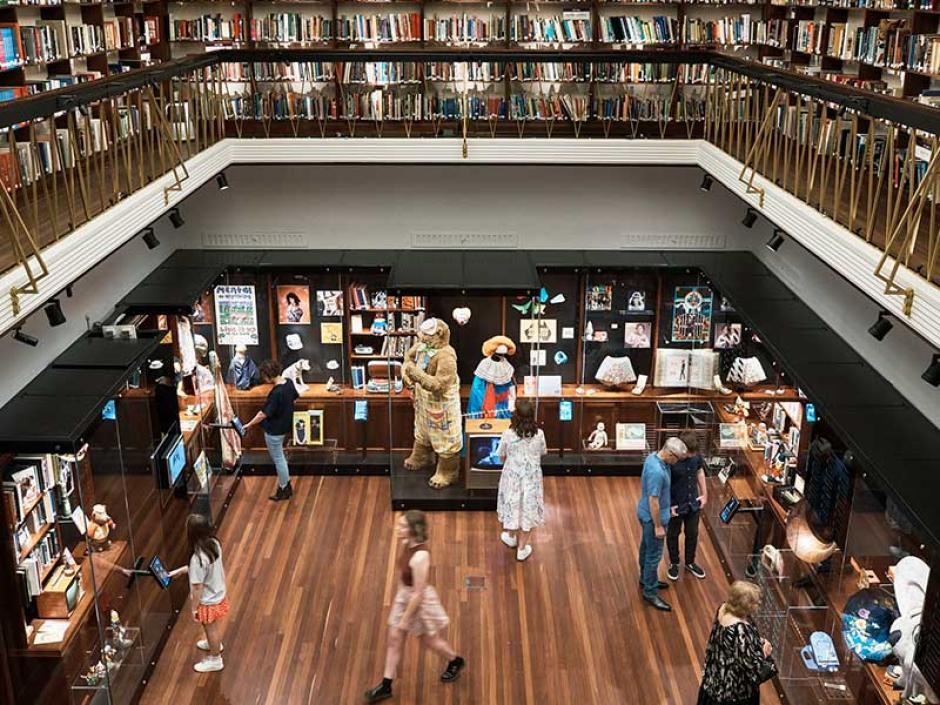
The newly restored library, with almost 300 collection items on show, at the National Film and Sound Archive. Photo: NFSA.
The NFSA won the Architecture and Building Conservation Award for the renewal of its historic building at Acton, between the Australian National University and Lake Burley Griffin.
The judges described the project as an “excellent refurbishment of three rooms within a wider renewal of the Commonwealth heritage-listed building that housed the former Australian Institute of Anatomy”.
“The works removed layers of fabric to simplify and showcase the original building’s fabric and character,” they said.
“While high-quality work is to be expected from national institutions, given their access to professional staff, advisors and funding, the project nevertheless shows real originality in its approach.”
Mr McIntyre, who has led the NFSA since 2021, described the Art Deco building as one of the most important precious assets in the cultural institution’s care. It was, he said, heartening that “our approach to rejuvenating the building for the 21st century has been so popular with our visitors”.
“It is such a special building,” he said. “It has lots of quirky features, such as the geometric platypus skylight, the stained glass, and the wonderful local marble. But one of the reasons it is so special is that it is still so intact.”
He said the renewal project was never about making the building something it was not.

Chief Executive Officer of the NFSA, Patrick McIntyre. “I love it when museums get it right.” Photo: Nic Walker.
He said it had been “adapted” in past lives, but “what we were really excited about with this work was stripping everything back and seeing what was behind – like the library. It had been lined with plasterboard as a temporary exhibition space. But when we discovered that the original library joinery, all the shelves were still there, it was important for us to show that”.
The library is now home to almost 300 items drawn from the NFSA collection, restored to its original splendour, from the soaring skylight to historic cabinetry. It showcases the diversity of the collection, from a View-Master to gramophone, boombox and iPod Shuffle, through a nostalgic view of TV classics like Skippy and Romper Room, music from Dame Nellie Melba to Kylie Minogue to Yothu Yindi as well as artefacts from the newsreel era through to Australian classics.
He said that while the NFSA was the nation’s leader when it came to collecting, digitising and preserving audiovisual history, so much more material came with that collection over the years.
“We also had this huge collection of artefacts, but nowhere to show them off,” he said.
“When you collect for a film and sound archive, you also collect documents and entertainment hardware around audiovisual culture. Now we have somewhere to showcase them.
“I love watching people and where they go to first,” he said.
“Some go straight to the Priscilla dress or to the iPod. They are all a collection of items that spark memories for people.
“I just love that magic when museums get it right.”
The new-look Mediatheque, formerly the Institute of Anatomy’s Histology Room – where cells were studied through microscopes – has become a popular lounge for visitors to enjoy highlights from the audiovisual archives.
With the first stage of renewal work completed, more plans are underway to restore more sections of the building.
The National Film and Sound Archive of Australia is open daily; admission is free.












